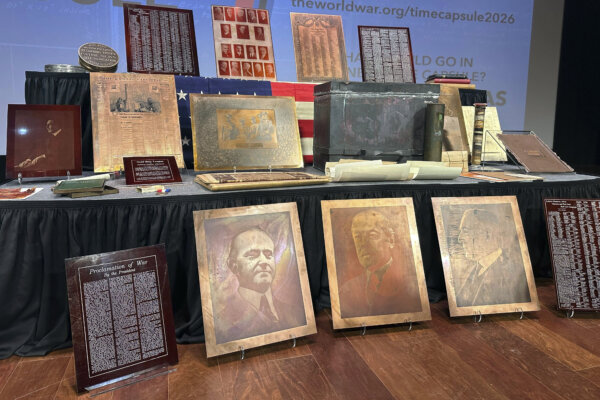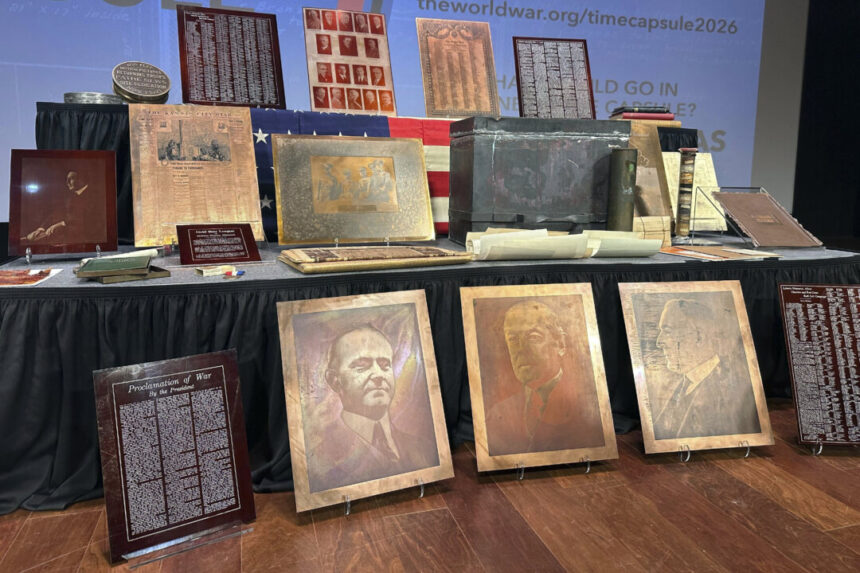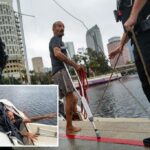
Time capsules are unpredictable, and the unearthing of one buried a century ago inside a prominent World War I memorial in the nation was no exception.
The initial challenge was reaching the time capsule, which was sealed in a tower soaring 217 feet above the Kansas City skyline, crowned with a massive flame.
Crews had to drill through 18 inches of concrete and limestone, according to Christopher Warren, the chief curator of the National World War I Museum and Memorial, at a reveal event on Wednesday.
“It was a difficult task. There was no easy access to retrieve the time capsule,” he explained.
Another hurdle arose: the time capsule contained 1920s-era film with nitrate, a highly flammable substance as it deteriorates over time. As a precaution, the police department bomb squad was present during the opening of the time capsule.
“Thankfully, there were no fires, which aided in preservation. It may not have been as exciting as explosions would have been,” Warren remarked.
In front of an audience that included school children, Warren showcased the carefully evaluated contents. A standout item was a letter from President Calvin Coolidge, commending the community’s spirit. The monument, built in an Egyptian Revival style, was erected following a surge of postwar patriotism after raising $2.5 million in just under two weeks in 1919, equivalent to approximately $45 million today.
The achievement was so significant that Allied commanders from various nations gathered in 1921 to dedicate the site where the time capsule was interred three years later. Situated across from the Kansas City train station, which served as a departure point for over half of U.S. troops heading overseas, the monument now houses a museum underground.
Surprises were saved for the public unveiling, including the first reading of a handwritten message believed to be from Gen. John J. Pershing, the American forces commander in World War I.
However, there was a slight twist. The note revealed that the time capsule committee had reached out to Pershing without a response. Instead, they included some of Pershing’s words from the 1921 dedication ceremony.
“Ladies and gentlemen, do you know what this is? This is a 100-year-old out-of-office message,” Warren quipped. “General Pershing may be away, but he will respond to your email upon his return. That’s alright. He remains an American hero.”
Museum leaders are already planning to create a new time capsule.
By Heather Hollingsworth






